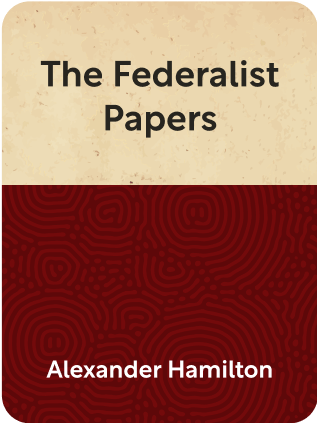

This article is an excerpt from the Shortform summary of "The Federalist Papers" by Alexander Hamilton. Shortform has the world's best summaries of books you should be reading.
Like this article? Sign up for a free trial here .
What is the relationship between federalism and the Constitution? How do the principles of federalism appear in the document?
Federalism is an integral part of the Constitution. There is the separation of powers within the national government and the balance of state and federal powers.
Read more about the relationship between federalism and the Constitution.
Federalism and the Constitution
Having already established the failures of the old system of government, we can now pivot to an analysis of the principles of the new Constitution. Federalism and the Constitution go hand-in-hand. The new government had specific powers with regard to:
- National defense
- Taxation
- Overseeing interstate commerce
A core principle held by the Framers of the new Constitution was that it wasn’t enough to merely grant powers to the federal government on paper. The new government needed to have the authority to make laws and enforce provisions that would enable it to effectively exert those powers.
Standing Armies and the National Defense
The most important purpose of any government is to secure peace and protect its people from internal and external threats. Accordingly, the federal government under the Constitution would have the power to raise and equip a standing army—the only way the US could survive in the face of threats from European powers.
Standing armies under the Constitution would not become agents of tyranny because they could only be raised by the legislative—not the executive—branch. Thus, the people’s representatives (the legislative branch) would retain control and prevent the creation of a permanent military establishment. The way this was drafted shows the connection between federalism and the Constitution.
The Power of Direct Taxation
The management of public finances is another core function of any government. Under the Articles, the federal government only had a few direct revenue streams, like taxes on imported goods. This left the government unable to meet basic fiscal obligations and led to rising costs in the financing of the national debt and a collapse in public confidence. Because it acted directly on individuals, not states, the new Constitution gave the government powers of direct taxation. Thus, it could directly assess taxes on land and people, without relying on the states as intermediaries.
Giving the federal government the power of direct taxation would also be good for the broader economy. If the federal government had to rely solely on customs duties and excise taxes (taxes paid by manufacturers and incorporated into the final price of the product paid by consumers) for its revenue, it would have to tax these items at an extraordinary rate. Giving the federal government a broad tax base would encourage modest tax rates, which would be good for both producers and consumers. Balancing interests here is the product of federalism and the Constitution.
Interstate Commerce
The Constitution greatly simplified the economic relationships between the states by granting the federal government the sole authority to unilaterally impose tariffs and duties on imports. Thus, states could no longer (without the consent of Congress) put tariffs on imports from other states. Federalism and the Constitution may seem at odds here with the centralized power.
To further stimulate interstate commerce, Congress was also given the sole authority to coin money and issue paper notes of legal tender, establish post roads, set uniform standards of weights and measures, further rationalizing and harmonizing trade between the states, and create national rules for naturalization.
The Necessary and Proper and Supremacy Clauses
The Necessary and Proper Clause of the Constitution states that Congress has the power to enact all “necessary and proper” laws to enforce the powers it is granted. Some critics of the Constitution alleged that this language gave Congress a blank check to pass any laws it wished. But these objections were rooted in a misunderstanding of the purposes of drafting a Constitution in the first place—it would have been nonsensical to create a plan for a government and assign to it specific powers without giving it the means to enforce those powers.
The Supremacy Clause made federal law the supreme law of the land—superseding state law (and requiring even state officials to swear an oath of allegiance to the Constitution). A national government that was unable to exercise supremacy over its constituent members was not a national government at all; it was merely a voluntary treaty or association, vulnerable to dissolution by any of the parties to it. While it may seem like federalism and the Constitution contradict one another here, these clauses were essential to effective government.

———End of Preview———
Like what you just read? Read the rest of the world's best summary of Alexander Hamilton's "The Federalist Papers" at Shortform .
Here's what you'll find in our full The Federalist Papers summary :
- The genius of the founding fathers in how they designed the United States Constitution
- Why it was critical for the United States to form a union rather than stay separated as colonies
- How Alexander Hamilton anticipated social issues that are still relevant today






